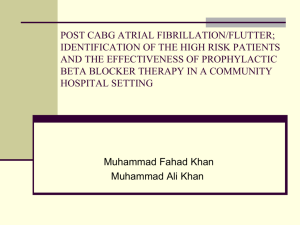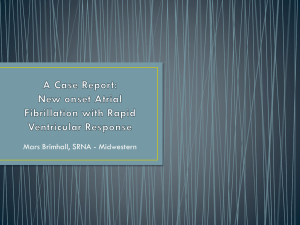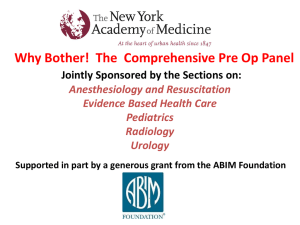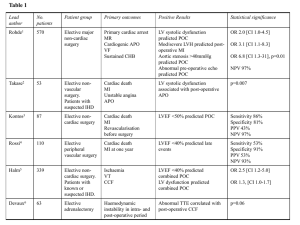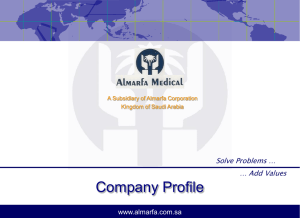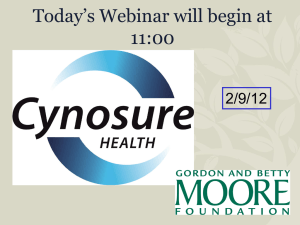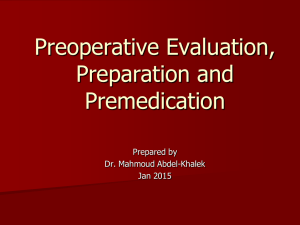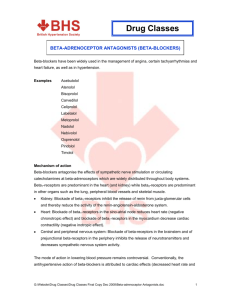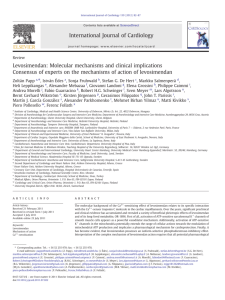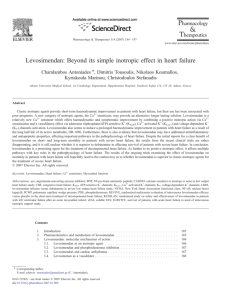beta-blockers in cardiac surgery
advertisement
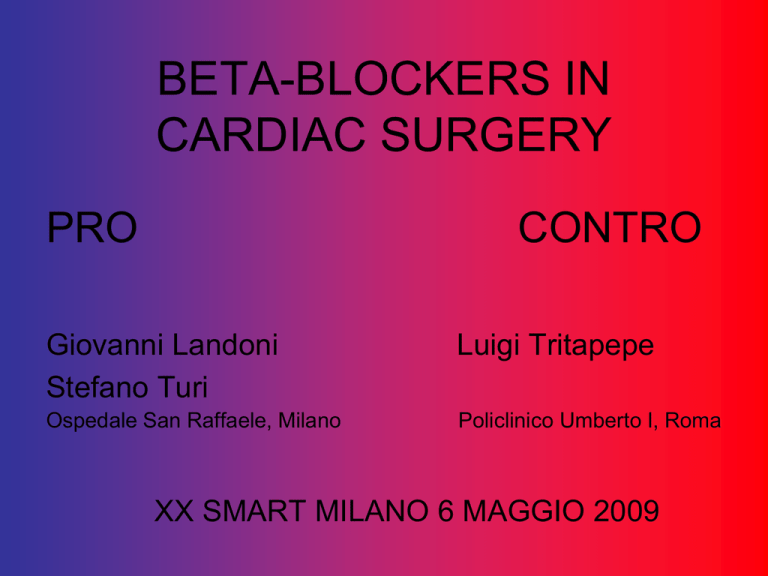
BETA-BLOCKERS IN CARDIAC SURGERY PRO CONTRO Giovanni Landoni Stefano Turi Luigi Tritapepe Ospedale San Raffaele, Milano Policlinico Umberto I, Roma XX SMART MILANO 6 MAGGIO 2009 BETA-BLOCKERS IN CCH BETA-BLOCKERS IN CARDIAC SURGERY BETA-BLOCKERS IN CARDIAC SURGERY “.For patients with elevated biomarkers after CABG, it is it is particularly important that attention be given to optimal medical therapy, including the use of betablockers, angiotensin converting enzyme (ACE) inhibitors, antiplatelet agents, and statins in eligible individuals”. ATRIAL FIBRILLATION • Atrial fibrillation occurs in 30% patients undergoing CABG (peak on the secondthird post-operative day) • Increase in the length of stay • Increase the charges by as much as 10000$ • Increase in post-operative stroke • Class I Preoperative or early postoperative administration of betablockers in patients without contraindications should be used as the standard therapy to reduce the incidence and/or clinical sequelae of atrial fibrillation after CABG. (Level of Evidence: B) • Currently, preoperative or early postoperative administration of betablockers is considered standard therapy to prevent atrial fibrillation after CABG except in patients with active bronchospasm or marked resting bradycardia. • Withdrawal of beta-blockers in the perioperative period doubles the incidence of postoperative atrial fibrillation after CABG. BETA-BLOCKERS IN CARDIAC SURGERY • First drug choice in treatment of post CABG FA • Reduction of hospital length of stay and cost BETA-BLOCKERS IN CARDIAC SURGERY • Could be useful to use beta-blockers for the first time in selected patients in the peri-operative period? • How and When should we admnister , just before cardiac surgery, beta-blockers in patients already taking these drugs? • What about non.cardiac surgery? Timing of B blocker administration • • • • • • • • • • • • • 2 weeks before 1 week before and 30 days after (POLDERMANS) 4 days before 1 day before 2 hours before, than for 5 days 2 hours before (3 studies) 30 minutes before, than for 72 h Just before surgery (7 studies) Just before, than for 5-11 days (3 studies) Before extubation Post surgery for 48 h Post surgery for 7 days (MANGANO) 1 h after surgery till hospital discharge B blocker administration • 7 Esmolol • 6 • 4 • 3 Metoprolol Atenolol Labetalol • • • • Oxprenolol Timolol Propranolol Bisoprolol 1 1 1 1 500-300 ug/kg/min or 1.5-3 mg/kg ev or 100-200 mg ev 2 or 4 mg ev or 50-100-200 mg os 5 mg ev or 50 mg os (MANGANO) 5 or 10 mg ev or 0.25-1 mg/kg ev or 100 mg os 20 mg os 10 mg os 10 mg os 5 mg os (POLDERMANS) Stabilizzazione della placca Possibile effetto diretto su PTL (infiammazione) Diminuisce lo stress emodinamico Diminuisce lo stress di parete sistolico, la contrattilità e la frequenza cardiaca Migliora domanda/apporto di O2 Aumenta la durata della diastole, migliora la distribuzione del flusso EFFETTI BENEFICI DEI BETABLOCCANTI Effetto antiaritmico Diminuiscono le aritmie ventricolari, aumenta la soglia della fibrillazione ventricolare TERAPIA FARMACOLOGICA BETA-BLOCCANTI Controllo Ipertensione/ tachicardia Induzione di ipotensione TERAPEUTICO Controllo emodinamico Trattamento aritmie UTILIZZO PERIOPERATORIO DEI BETABLOCCANTI Trattamento Ischemia miocardica PROFILATTICO Diminuzione di morbidità/ mortalità cardiaca perioperatoria In this large North American observational analysis, preoperative beta-blocker therapy was associated with a small but consistent survival benefit for patients undergoing CABG, except among patients with a left ventricular ejection fraction of less than 30%. This analysis further suggests that preoperative beta-blocker therapy may be a useful process measure for CABG quality improvement assessment. • 629.877 patients • 497 hospitals • 1996-1999 • unadjusted 30-day mortality, 2.8% vs 3.4%; odds ratio [OR], 0.80; 95% confidence interval [CI], 0.78-0.82 • Preoperative -blocker use remained associated with slightly lower mortality after adjusting for patient risk and center effects using both risk adjustment (OR, 0.94; 95% CI, 0.91-0.97) and treatment propensity matching (OR, 0.97; 95% CI, 0.93-1.00) • Among patients with a left ventricular ejection fraction of less than 30%, however, preoperative -blocker therapy was associated with a trend toward a higher mortality rate (OR, 1.13; 95% CI, 0.96-1.33; P=.23). • The absence of preoperative -blocker therapy (odds ratio 3.94; 95% confidence interval, 1.123-13.833; p 0.03) and of an epidural catheter (odds ratio 3.91; 95% confidence interval, 1.068-14.619; p 0.04) were the only preoperative and intraoperative variables independently associated with a prolonged intensive care unit stay • 92 patients • 1 hospital • 2008 • 73y • 60% EF • CABG ESMOLOL Pharmacological properties • • • • Ultra short-acting beta-blocker Half-life 8 minutes Time to peak effect 6-10 minutes Wash-out time 20 minutes after stopping infusion • Clerance: ester hydrolysis by erytrhrocitary estherase • Administration: endovenous,loading dose followed by continous infusion CLINICAL USE • • • • Hypertension Myocardial infarction Myocardial ischaemia Treatment of arrhytmias • The first beta-blocker choice in emergency and in critical patients SIDE EFFECTS • Hypotension • Bradycardia • Low output cardiac syndrome • Obstructive pulmonary disease CARDIAC SURGERY • Reduction of haemodynamic response to laringoscopy, intubation, extubation • Treatment- prevention of arrhytmias postCPB (atrial fibrillation,atrial flutter) • Alternative to traditional cardioplegic solutions META-ANALYSIS • • • • 23 studies 979 patients All mono-center studies Analysis with Review Manager 4.2 • We tried to contact all the corresponding authors to know if they had new data ISCHAEMIA Ischemia 15/122 (12%) 36/140 (27%) 0.009 INOTROPIC DRUGS Inotropi 29/153 (18%) 48/146 (32%) 0.002 • Rapid injection of an esmolol bolus can quickly resolve the systolic anterior motion and left ventricular outflow tract obstruction if it is the result of haemodynamic factors, alleviating hyperdynamic left ventricular conditions and their contribution to dynamic left ventricular outflow tract obstruction and helping to identify the few patients who require immediate additional surgical intervention. Esmolol to treat systolic anterior motion (SAM) of the mitral valve causing left ventricular outflow tract obstruction (LVOT) after mitral valve repair. • Systolic anterior motion (SAM) of the mitral valve causing left ventricular outflow tract obstruction (LVOT) is common after mitral valve repair but only rarely necessitates immediate additional surgical intervention. • The degree of systolic anterior motion extends along a continuous spectrum from minor chordal-only systolic anterior motion to its most severe form with permanent left ventricular outflow tract obstruction and moderatesevere mitral regurgitation. • The management of systolic anterior motion in the operative room remains controversial Administration of Esmolol during cardioplegia • Reduction of oxydative damage • Not increase of lactate concentrations • Less ICAM-I expression • Less expression of inducible NOS (associated to myocardial injury) NEW RCT • • • • New large multicenter randomized trial Esmolol during extracorporeal circulation DTD>60 and FE< 50% patients Administration just before aortic clamping and with cardioplegia (1-2 mg/kg) Reducing perioperative myocardial infarction with anesthetic drugs and techniques. Current Drug Targets 2009, in press Volatile Anesthetics Evidence! Mortality 4/977=0.4% v 14/872=1.6% NNT=84 RRR=(1,6-0,4)/1,6=75% OR: 0.31(0.12-0.80) P=0.02 Evidence! Myocardial infarction 24/979=2.4% v 45/874=5.1% NNT=37 RRR: (5.1-2.4)/5.1 = 53% OR: 0.51(0.32-0.84) p=0.008 Evidence! LEVOSIMENDAN VS CONTROL Mortality in cardiac surgery 11/235=4.7% v 26/205=12.7% P=0.007 Evidence! LEVOSIMENDAN VS CONTROL Myocardial Infarction in cardiac surgery 2/183=1.1% v 9/153=5.9% P=0.04 CONCLUSION: Volatile agents and levosimendan consistently reduce perioperative myocardial infarction and mortality in cardiac surgery but they have not been properly studied in non-cardiac surgery. CONCLUSIONS BETA-BLOCKERS • Reduction of arrhythmias after cardiopulmonary bypass (FV) • Reduction of ischemia • Reduction ICU stay and time for mechanical ventilation • Reduction of mortality at thirty days “PERCHE’ NON SIAM POPOLO PERCHE’ SIAM DIVISI” MAMELI ITACTA ONGOING RCTs TOPICS HOSPITALS PATIENTS GRANTS • VOLATILE ANESTHETICS • 4 200 AIFA 2006 • FENOLDOPAM • 34 1.000 MINISTRY 2008 • DESMOPRESSIN • 3 200 • • • ESMOLOL LEVOSIMENDAN VALVOLE PERCUTANEE • • • 3 28 3 200 1.000 150 landoni.giovanni@hsr.it www.itacta.org “.For patients with elevated biomarkers after CABG, it is it is particularly important that attention be given to optimal medical therapy, including the use of betablockers, angiotensin converting enzyme (ACE) inhibitors, antiplatelet agents, and statins in eligible individuals”. • Class I Preoperative or early postoperative administration of betablockers in patients without contraindications should be used as the standard therapy to reduce the incidence and/or clinical sequelae of atrial fibrillation after CABG. (Level of Evidence: B) • Withdrawal of beta-blockers in the perioperative period doubles the incidence of postoperative atrial fibrillation after CABG. In this large North American observational analysis, preoperative beta-blocker therapy was associated with a small but consistent survival benefit for patients undergoing CABG, except among patients with a left ventricular ejection fraction of less than 30%. This analysis further suggests that preoperative beta-blocker therapy may be a useful process measure for CABG quality improvement assessment. Administration of Esmolol during cardioplegia • Reduction of oxydative damage • Not increase of lactate concentrations • Less ICAM-I expression • Less expression of inducible NOS (associated to myocardial injury) Reducing perioperative myocardial infarction with anesthetic drugs and techniques. Current Drug Targets 2009, in press ITACTA ONGOING RCTs TOPICS HOSPITALS PATIENTS GRANTS • VOLATILE ANESTHETICS • 4 200 AIFA 2006 • FENOLDOPAM • 34 1.000 MINISTRY 2008 • DESMOPRESSIN • 3 200 • • • ESMOLOL LEVOSIMENDAN VALVOLE PERCUTANEE • • • 3 28 3 200 1.000 150 landoni.giovanni@hsr.it www.itacta.org For these and further slides on these topics please feel free to visit the metcardio.org website: http://www.metcardio.org/slides.html



